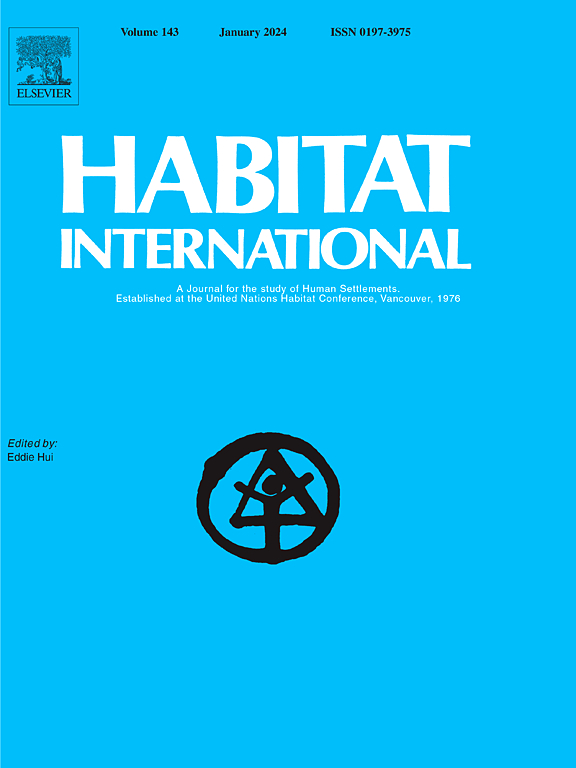Evolution of rural settlements and its mechanism under the influence of A-class scenic spots in karst region: A case study of Guizhou Province in southwestern China
IF 7
1区 经济学
Q1 DEVELOPMENT STUDIES
引用次数: 0
Abstract
With the accelerated rate of urbanization and industrialization, tourism has become an important player in rural development, especially in the karst region, where tourism resources are rich and traditional agriculture plays a dominant role. A-class scenic spots (ACSS) are a key factor in changing the socio-economic conditions of rural settlements (RSs). They play a crucial role in shaping the spatial structure of these settlements. However, few studies have explored the effect of ACSS on the evolution of RSs. To address this gap, the study selects Guizhou Province, a typical karst area in southwestern China, as a case study, and first constructs a theoretical framework of ACSS influence the spatial evolution of RSs. Based on the principle of distance decay, the study defines the “ACSS effect zones” using buffer zone analysis, and assesses the spatiotemporal evolution characteristics of RSs in the “ACSS effect zones” through spatial visualization and the landscape metrics during the period 2010 to 2020. Spatial Durbin model and mediation effect model are then applied to analyze the direct effects, spatial spillover effects, and mediation effects of ACSS on the evolution of RSs. Finally, the study explores the evolution mechanism of RSs under the influence of ACSS by using the DPSIR model. The findings indicate that ACSS primarily influence the socio-economic conditions of RSs by improving infrastructure, providing jobs, and enhancing the human settlements environment, which in turn effect their spatial patterns. In the “ACSS effect zones”, RSs generally show an expansion trend during the period from 2010 to 2020. The overall fragmentation of RSs within the “ACSS effect zones” has decreased, with RSs becoming more centralized and exhibiting increasingly regular shapes. Infrastructure and human settlements environment significantly drive the expansion of both local and neighbouring RSs, while livelihood factors related to farm households inhibit the expansion of neighbouring RSs. This study provides valuable insights for formulating coordinated development policies between regional villages, helping to foster positive interactions between tourism and RSs.
喀斯特A级景区影响下的乡村聚落演化及其机制——以贵州省为例
随着城市化和工业化进程的加快,旅游业已成为农村发展的重要力量,特别是在旅游资源丰富、传统农业占主导地位的喀斯特地区。a级风景名胜区是改变农村聚落社会经济条件的关键因素。它们在形成这些聚落的空间结构方面起着至关重要的作用。然而,很少有研究探讨ACSS对RSs进化的影响。为了弥补这一空白,本研究以西南典型喀斯特地区贵州省为例,首先构建ACSS影响RSs空间演化的理论框架。基于距离衰减原理,采用缓冲区分析方法对“ACSS效应区”进行了划分,并通过空间可视化和景观指标分析了2010 - 2020年“ACSS效应区”RSs的时空演化特征。运用空间Durbin模型和中介效应模型,分析了ACSS对RSs演化的直接效应、空间溢出效应和中介效应。最后,利用DPSIR模型探讨了ACSS影响下RSs的演化机制。研究结果表明,农牧合作主要通过改善基础设施、提供就业机会和改善人类住区环境来影响农牧合作的社会经济条件,进而影响其空间格局。在“ACSS效应区”,2010 - 2020年的RSs总体呈扩大趋势。在“ACSS效应区”内,RSs的整体碎片化程度有所下降,RSs变得更加集中,呈现出越来越规则的形状。基础设施和人居环境对本地和邻近生态系统的扩展都有显著推动作用,而与农户相关的生计因素对邻近生态系统的扩展有抑制作用。本研究为制定区域村庄间的协调发展政策提供了有价值的见解,有助于促进旅游业与乡村社区的良性互动。
本文章由计算机程序翻译,如有差异,请以英文原文为准。
求助全文
约1分钟内获得全文
求助全文
来源期刊

Habitat International
Multiple-
CiteScore
10.50
自引率
10.30%
发文量
151
审稿时长
38 days
期刊介绍:
Habitat International is dedicated to the study of urban and rural human settlements: their planning, design, production and management. Its main focus is on urbanisation in its broadest sense in the developing world. However, increasingly the interrelationships and linkages between cities and towns in the developing and developed worlds are becoming apparent and solutions to the problems that result are urgently required. The economic, social, technological and political systems of the world are intertwined and changes in one region almost always affect other regions.
 求助内容:
求助内容: 应助结果提醒方式:
应助结果提醒方式:


